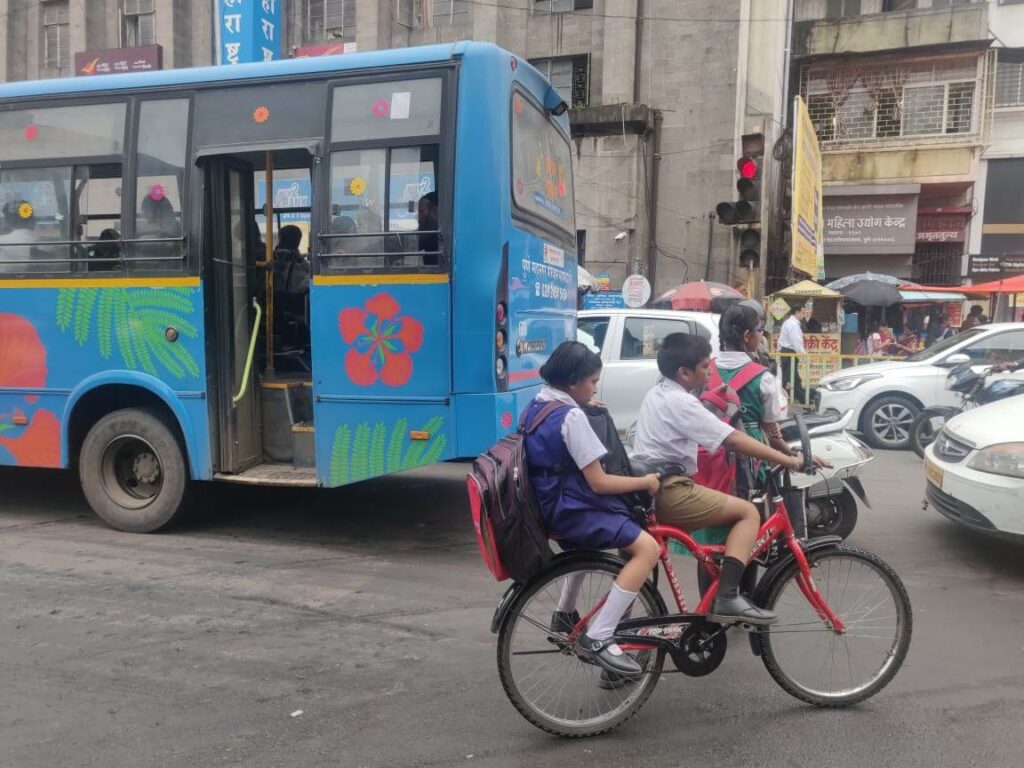Urban transport continues to be in trouble in Indian cities, with issues of congestion, pollution and safety getting worse day by day. The root cause of these, vehicular growth, both two-wheelers and cars, remains very high and the modal share of non-motorized transport and public transport continues to shrink. This is largely due to the absence of any coherent transport policy at the city-level. The de facto policy is to try and accommodate greater vehicular loads by increasing roads, building flyovers and developing parking lots. Traffic management focuses almost exclusively on moving vehicles, in terms of signal management, one-way streets etc. invariably at the expense of pedestrians, cyclists and public transport. Building bye-laws too favour more and free parking. Even where a policy or mobility plan exists, it is not adhered to.
The fundamental reason for this is that allocation of funds for transport by the various transport-related agencies are not tied to plans and outcomes, but an essentially ad hoc process at the whim of the city administration and council members. A budget analysis by SUM Net India looks at the Municipal budgets of 5 cities, namely, Ahmedabad, Bangalore, Chennai, Nagpur and Pune, and attempts to answer these critical questions:
1. How much do cities spend on transport in absolute terms and as a proportion of their entire budgets?
2. How is the money spent? – on motor-vehicle centric projects or for improvements to public transport and non-motorized transport infrastructure?
3. How do the funds allocations relate to the carbon-intensity of the mode?

Learning and suggestions from the analysis:
1. Municipal budgets are analysis averse. The variable formats of different cities, the difficulty in finding transport allocations, the variable levels of details and granularity across as well as within cities makes the budget a document that is very difficult for the public to decipher.
2. Little correlation is found between mobility plans made for the cities and their budget spending.
3. None of the cities have an outcome budget, so there is little accountability of what is achieved with the allocations in the budget.
4. There seems to be little synchronisation between the policies and plans announced by the Ministry of Urban Development (MoUD) and the city level budgets. The Ministry has been actively promoting ‘green mobility’, ‘low carbon mobility’ and ‘sustainable transport’. It has also come up with measurement criteria such as the Service Level Benchmarks for urban transport which grades cities on their services for transport. City budgets however do not mention nor attempt to achieve any of these transport benchmarks.
5. The Ministry has tried to “enforce” the National Urban Transport Policy (NUTP) and other requirements through centrally sponsored schemes such as JnNURM and the Smart Cities Mission. However, from the experience of JnNURM, these mechanisms haven’t worked too well either.
6. Budget spending must be “sustainable” when looked at in totality. While there is “Comprehensive Mobility Plan (CMP)- compliant” allocation, there is also a lot of spending on items that are not part of the CMP. For example, in Pune, while the city nominally complies with JnNURM by executing BRTS, allocations for “non-CMP” flyovers are also found in the budgets. So, it is important to look at not just the spending of specific “mission” funds, such as JnNURM or Smart City, but the overall allocation of ALL funds on transport.
7. The way to bridge this gap is to formulate state specific urban transport policies, which can then be made statutory through acts, instead of relying solely on circulars and announcements made by the MoUD from time to time. The State policy can warrant mandatory compliance both for budgets as well as the Development Plans for the cities.
You can access the detailed report here. For a shortened version, read this document.